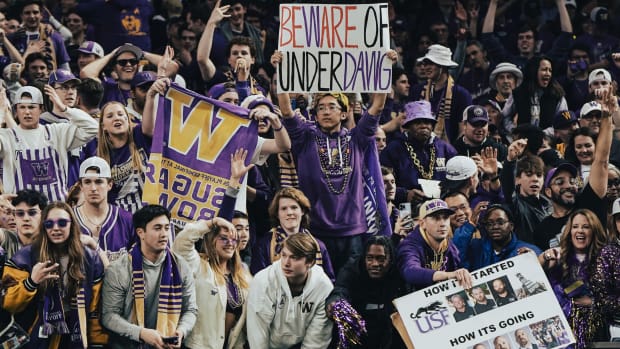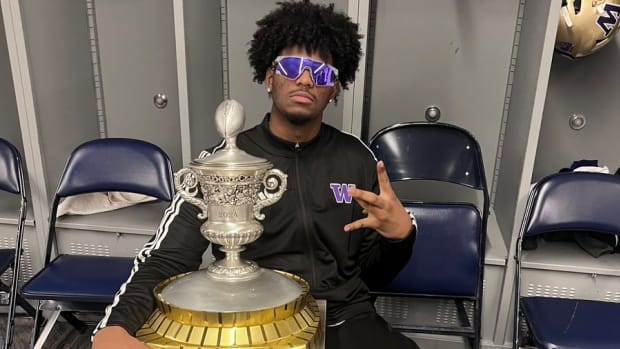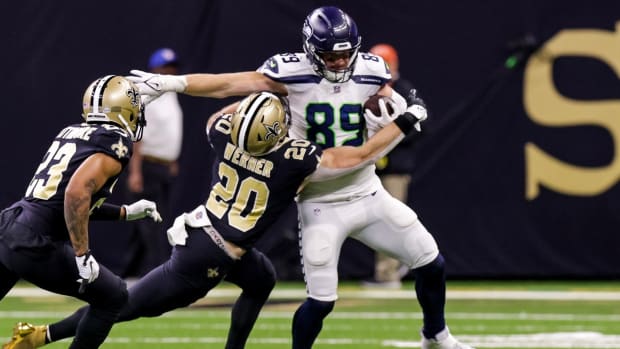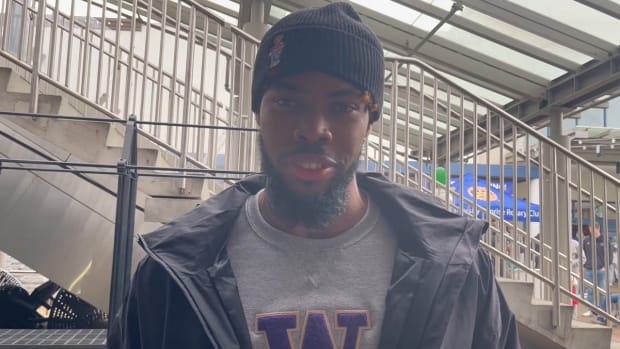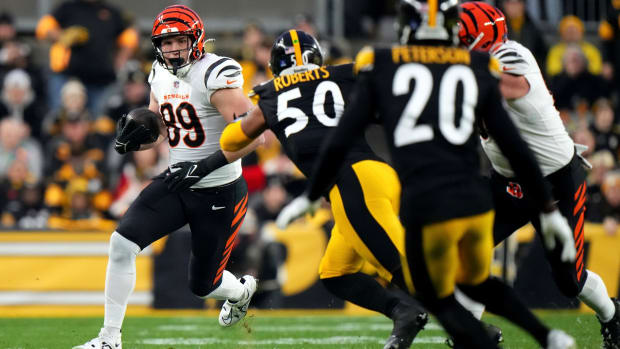4 Changes to the Husky Offense That Could Make it More Prolific
Washington’s football offense has struggled since the departure of Jonathan Smith, the former offensive coordinator and current Oregon State head coach. After two years of futility, the Huskies fired Bush Hamdan and replaced him with John Donovan.
Jimmy Lake stated when he was promoted from defensive coordinator to head coach that the UW offensive style would change to more of an attacking model.
As the players come back to campus to work in small groups, they will get their first experience with the Lake-led program.
Here are four offensive changes that could bring a more aggressive system:
Simplify the offense: Former UW coach Chris Petersen often talked about underclassmen being a step slow in learning the offense. This affected receivers in pre-snap movement and blocking schemes. Transitioning to a simpler system might start with less pre-snap movement and an emphasis on scheme responsibilities, allowing players to move more free without second-guessing their assignments.
Talent will prevail: At times it was evident during the Petersen era that players who had been in the system longer were getting reps over more talented players. One obvious example last year: Puka Nacua. The freshman from Utah was explosive when he was on the field. His first catch was a touchdown against Hawaii yet he struggled to pull consistent minutes until the Oregon game. With Lake at the helm, the coach will look to fit the best players on the field as soon as possible by finding ways to be flexible and play to their strengths.
More of an air attack: Over the last few years, Washington has leaned on the run game, and for good reason. Myles Gaskin will go down in Husky history as one of the best ever on Montlake. There were times last year that the staff tried to open up the passing game for Jacob Eason but some of the issues in the receiving corps as well as Eason’s errant touch made this difficult. The receiving room takes a significant step forward in talent this year with Ty Jones, Terrell Bynum and Nacua as projected starters. Those three combined with the large group of potential stars behind them will force teams to spread the field more and give the running game room to operate.
A true running-back stable: Washington traditionally has had a feature back that gains 1,000 yards each year. A young Bishop Sankey took the bulk of the carries for three years, leading to Gaskin taking over as a true freshman. In this new system, the Huskies have the flexibility to create packages that fit the strengths of the different backs on hand. Senior Sean McGrew, the smallest, has shown that he has the ability to do everything a three-down back should do. Sophomore Richard Newton was dominant in stretches of games last year and showed he was more than just a short-distance runner. Redshirt freshman Cam Davis turned heads last year but he didn’t break into the rotation. This coming scenario, especially if the season is shortened, could mean having the running-back position prove effective yet fail to produce a 1,000-yard rusher.
Only the coaches know for sure what the offense will look like this season, if it happens. The only thing certain is Washington will have a new offensive identity. The game has shifted over the last decade to an open concept that enables players to have immediate impacts on the field. If the coaches can open up the field, every position group should see more sustained success.
